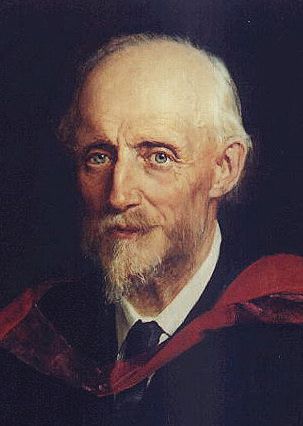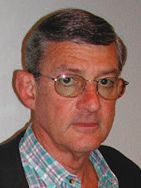So who was this Osborne Reynolds guy, anyway?
Dr. Robert M. Gresham, Contributing Editor | TLT Lubrication Fundamentals September 2014
This British scientist is responsible for helping tribologists understand the basic principles of fluid dynamics.
IN PREVIOUS TLT ARTICLES, we have tried, in simplistic terms, to delve into the study of rheology and the concepts that make up elastohydrodynamic lubrication (EHL). This is also one aspect of the broader field of fluid dynamics, which deals with the motion of all liquids and gases.
How is it that tribologists were able to figure that stuff out? Many of the key answers began with a guy named Osborne Reynolds.
Reynolds was sort of a deep thinker. He was a British scientist and engineer who primarily studied fluid dynamics. In 1902, later in his career, he developed a theory of everything which he published in a book titled
The Submechanics of the Universe. A year later, a popularization of his theory was published in
An Inversion of Ideas as to the Structure of the Universe. Reynolds’ theory explains many of the puzzles of modern physics and allows for antigravity—a space drive, faster than light speeds and unlimited source of energy.
In any event, in terms of fluid dynamics, Reynolds developed equations that showed the relationship between inertia and viscosity. In its classical form:

Don’t leave me yet. By just looking at the terms in the equation, you can make some pretty good guesses without being an Einstein, or, in this case, a Reynolds. This Reynolds equation says that with density we can have some fluid material (air, water, oil, etc.) that has mass (kilograms per cubic meter-density units), moving with a velocity (meters per second), over some distance (meters) divided by viscosity (kg/m/sec), which, remember, is the resistance to flow. Viscosity is kind of like a force (remember from high school physics, F=MA or force = mass (kg) times acceleration (meters/sec
2))—works out that viscosity is like force per second. The point is that we can learn quite a lot about how fluids work from this equation.
One of the things that Reynolds learned is that for a given fluid system, when the Reynolds number is large, it can mean that the fluid must be moving rapidly and turbulence can occur. One immediately thinks of whirlpools, cyclones and tornados.
This Reynolds number indicates the ratio, or relative importance, of the flow’s inertial forces to its viscous ones. (A flow’s inertial force is calculated by multiplying together the fluid’s density and the square of its velocity and dividing this product by a characteristic length of the flow such as the width of an airfoil, if the flow is air over an airplane wing.) Large inertial forces, relative to the viscous ones, tend to favor turbulence, whereas high viscosity staves it off. Put another way, turbulence occurs when the Reynolds number exceeds a certain value. The number is proportional to both the size of the object and the flow velocity.
For example, the Reynolds number for air flowing over the fuselage of a cruising commercial aircraft is in the neighborhood of 100 million. For the air flowing past a good fastball, the Reynolds number is about 200,000. For blood flowing in a mid-size artery, it is about 1,000 (
1). Have you ever noticed how the water can flow from a bathroom faucet (without an aerator)? Open the faucet fully and the water tumbles out of the spigot filling the sink with foam and ripples—that is the result of turbulence. Now slow the flow until you get a smooth glassy column of water flowing down into the water in the sink with almost not a ripple at all. This non-turbulent flow is called laminar flow—usually a good thing. Reynolds figured these things out and learned how to measure, understand and predict the flow of fluids.
Tribologists perform similar kinds of calculations to characterize the flow of oil in bearings, hydraulic systems and related kinds of systems. For example, in hydraulic systems, we generally try to control turbulence because it can lead to poor flow of the hydraulic oil, stress on seals and valves, vibration, foaming and probably some other problems that I haven’t thought of. In bearings, it can lead to starvation of the contact area. This is because we might have insufficient flow into the contact area or air could be entrained, causing a poor fluid film. In addition, similar calculations allow tribologists to predict film thickness in the contact area and thereby insure that sufficient lubrication will take place for a given design and lubricant.
This guy Reynolds, and those who followed him, was pretty important to us in the lubrication business.
OSBORNE REYNOLDS BIOGRAPHY
Osborne Reynolds was born in Belfast on Aug. 23, 1842. Reynolds’ early education was undertaken mainly by his father, who, in addition to being an extremely able mathematician, had a keen interest in mechanics and mechanical matters and took out a number of patents concerned with improvements to agricultural equipment and machinery. The young Osborne Reynolds showed an early aptitude and liking for the study of mechanics and, at the age of 19, entered the workshop of Edward Hayes of Stony Stratford, a well-known inventor and mechanical engineer. He remained with Hayes for a year obtaining practical experience in the manufacture and fitting out of coastal steamers.
He decided to go to Cambridge to take a course in mathematics. His university career was highly successful. He graduated in 1867 and was immediately elected to a fellowship at Queens College. He then entered the office of a civil engineer, John Lawson, of London.
In 1868, Reynolds applied for and was elected to the newly instituted chair of engineering at Owens College (now the University of Manchester) until 1905. He died on Feb. 21, 1912, at Watchet in Somerset at the age of 69.
Reynolds was awarded a master’s of arts degree by the University of Cambridge in 1880 and elected honorary fellow of Queens’ College, Cambridge in 1882. In 1877, he was elected a fellow of the Royal Society and in 1888 received the Royal Medal. In 1883, he became a member of the Institution of Civil Engineers and was awarded the Telford Premium in 1885. The University of Glasgow conferred the honorary degree of LL.D. on him in 1884. He was elected president of the Manchester Literary and Philosophical Society in 1888 and received the Dalton Medal in 1903.

REFERENCE
1.
Moin P. and Kim, J. (1997), “Tackling Turbulence with Supercomputers,”
Scientific American,
276 (1), pp. 62-68.
 Bob Gresham is STLE’s director of professional development. You can reach him at rgresham@stle.org
Bob Gresham is STLE’s director of professional development. You can reach him at rgresham@stle.org.